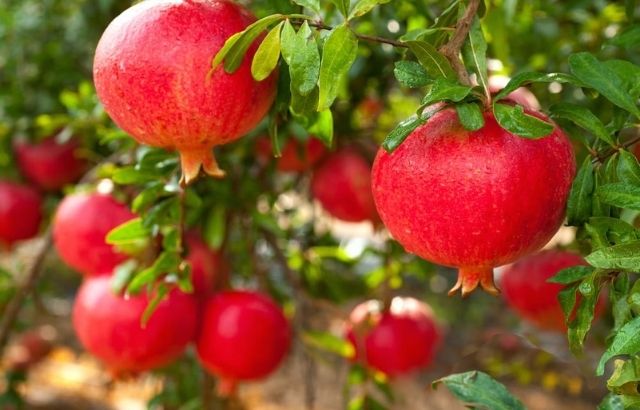Magnolia trees are renowned for their stunning beauty and fragrant flowers, making them popular among many garden enthusiasts. These majestic trees have a rich history and can be found in various parts of the world, including Asia, North America, and South America. Before delving into the growth secrets of magnolia trees, it’s important to understand their basic characteristics.
Magnolia trees belong to the Magnoliaceae family and are known for their large, glossy leaves and vibrant blossoms. Their flowers come in various colors, including white, pink, purple, and yellow. Some species even produce multiple colors on a single tree, creating a captivating display. Additionally, magnolia trees can range in size from small shrubs to towering giants, depending on the species.
Factors That Affect the Growth Rate of Magnolia Trees

Several factors influence the growth rate of magnolia trees. By understanding these factors, you can create an optimal environment for your magnolia to thrive.
Climate and Location
Magnolia trees are highly adaptable and can grow in various climates. However, the specific species of magnolia and its natural habitat play a significant role in determining its growth rate. Some magnolias thrive in warm, subtropical regions, while others can withstand colder temperatures. Choosing a magnolia variety well-suited to your climate and location is crucial for optimal growth.
Soil Conditions
The type and quality of soil directly impact the growth of magnolia trees. These trees prefer well-draining soil that is rich in organic matter. Sandy or loamy soil is ideal, as it allows for proper root development and prevents waterlogging. Furthermore, magnolias require a slightly acidic to neutral pH level (between 5.0 and 7.0) for optimal growth. Conduct a soil test to assess its composition and make necessary amendments to ensure the best conditions for your magnolia tree.
Sunlight Exposure
Magnolia trees generally thrive in areas with full sun or partial shade. They require a minimum of six hours of direct sunlight daily to promote healthy growth and abundant flowering. Insufficient sunlight can lead to weak growth and poor flowering. If your garden lacks adequate sunlight, consider pruning nearby trees or shrubs to allow more light to reach your magnolia tree.
Average Growth Rate of Magnolia Trees
The growth rate of magnolia trees can vary significantly depending on the species, climate, and growing conditions. On average, magnolia trees grow between 1 and 2 feet per year. However, this growth rate can be influenced by various factors, such as soil fertility, temperature fluctuations, and pruning practices.
Some magnolia species, like the Southern Magnolia (Magnolia grandiflora), have a slower growth rate. These trees typically grow around 1 foot per year. On the other hand, the Star Magnolia (Magnolia stellata) and Saucer Magnolia (Magnolia × soulangeana) have a relatively faster growth rate. They can grow up to 2 feet per year under optimal conditions.
It’s important to note that the growth rate of magnolia trees tends to slow down as they mature. Young magnolias, especially those in their first few years, experience more rapid growth than older, established trees. Therefore, it is crucial to provide proper care and establish a solid foundation for your magnolia tree during its early stages.
Tips for Promoting Faster Growth in Magnolia Trees

If you’re looking to promote faster growth in your magnolia tree, here are some tips to consider:
Proper Watering
Maintaining adequate moisture levels is crucial for the healthy growth of magnolia trees. During the first year after planting, water your magnolia deeply at least once a week. As the tree establishes, reduce the frequency but increase the amount of water per watering session. This encourages deep root growth and strengthens the tree’s overall structure.
Fertilization
Applying a balanced slow-release fertilizer in early spring can provide essential nutrients to your magnolia tree. Choose a fertilizer specifically formulated for trees and follow the manufacturer’s instructions for application rates. Avoid over-fertilization, which can lead to excessive vegetative growth and weaken the tree’s structure.
Pruning
Pruning plays a crucial role in shaping the growth of magnolia trees. Regular pruning helps remove dead or diseased branches, promotes airflow, and encourages new growth. The best time to prune magnolias is immediately after flowering. Be cautious not to remove more than one-third of the tree’s total foliage in a single pruning session to avoid stress.
How to Measure and Track the Growth of Magnolia Trees
Measuring and tracking the growth of your magnolia tree can be an exciting and rewarding experience. Here’s how you can do it:
Height Measurement
To measure the height of your magnolia tree, you’ll need a measuring tape or a measuring stick. Stand near the tree’s base and extend the tape or stick vertically until it reaches its highest point. Record the measurement and compare it to future measurements to track the growth progress.
Trunk Diameter Measurement
Measuring the trunk diameter provides valuable information about your magnolia tree’s growth and health. Wrap a flexible measuring tape around the trunk at chest height (approximately 4.5 feet from the ground) to measure the trunk diameter. Take note of the measurement and periodically re-measure to monitor changes in the trunk’s girth.
Canopy Spread Measurement
The canopy spread refers to the horizontal distance from one side of the tree’s foliage to the other. Measuring the canopy spread provides insight into the tree’s overall size and development. To measure the canopy spread, position yourself at the tree’s center and extend a measuring tape or rope to each side’s farthest points of the foliage. Record the measurement and compare it to observe the tree’s growth.
My Opinion
Magnolia trees are breathtakingly beautiful and a rewarding addition to any garden or landscape. You can foster healthy and vigorous magnolia trees by understanding the factors that affect their growth rate and implementing appropriate care practices. Remember to choose the right species for your climate, provide optimal soil conditions, and ensure proper sunlight exposure. With patience and consistent care, your magnolia tree will flourish, rewarding you with its stunning flowers and vibrant growth year after year.




